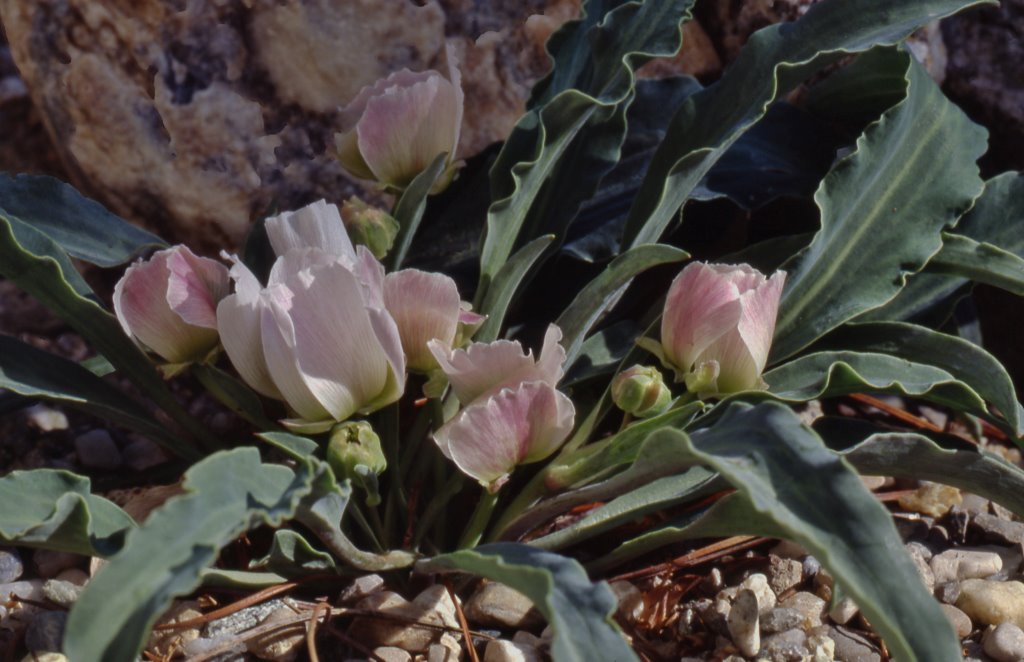In my earliest days of growing alpine plants I can recall fine plants of this North African Buttercup flowering in the early part of the year, from January onwards. This is such an early-flowering plant that some form of winter protection is essential to protect the beautifully shaped flowers from weather damage. Whilst running Edrom Nurseries I used to grow a marvellous dwarf-flowering selection of this species, given to me by the late Mrs. Sheila Maule, a great grower of choice alpine plants, who gardened in Balerno, Midlothian. She was an authority on the flora of the High Atlas Mountains of Morocco and often travelled there with her husband. The selected plant thrived in a large trough and it was planted in a freely-drained material in a sunny position. In the days of proper winters I would afford this early-flowering species a cloche cover.
The habitat in which this lovely buttercup grows is not dissimilar to the recently described Helleborus niger. Ranunculus calandrinioides grows in Cedar forest clearings or woodland fringes and on open hillsides. The species seems to have a fairly wide distribution in Morocco from the Rif Mountains in the N.E. and in a more south-westerly outpost. It is a dwarf perennial with typical fleshy roots and glaucous broad foliage often displaying a wavy edge. The flower stems may carry up to 3 flowers, white or flushed-pink in its finest forms. The stems vary in length from 6 to 20 cm and it is in the dwarf end of the spectrum where I am basing my recommendation. Plants may be grown in a deep pot and located in the alpine house or a more natural position in a deep trough allowing the deep root system to travel far in a well-drained substrate. The foliage will die down in the summer and re-appear in December.
Propagation can be carried out annually by saving seed which should be sown as soon as it can be rubbed free of its “mooring”. It may well germinate the following spring after a natural chilling. Established clumps can also be lifted (when moist and never when under stress) during the growing season and gently teased apart. Pot up the divisions in deep pots with a gritty mixture and do not allow them to become too damp. To maintain stocks of the lovely dwarf form, division will need to be employed as seedlings will vary in stature.
The species was first introduced into British gardens in 1929 and it received an AM in 1939.
